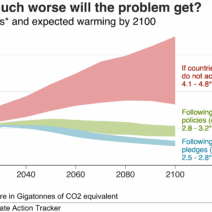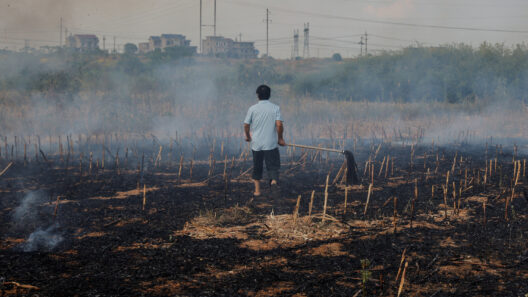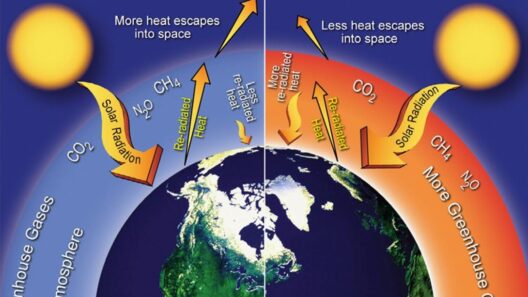Climate change is an unprecedented challenge facing humanity, and the role of governments in combating this crisis has never been more critical. Across the globe, varying levels of commitment and action characterize governmental responses. Ensuring a sustainable future requires not only adherence to existing promises but also innovative strategies and an inclusive dialogue with stakeholders.
What is the government doing about climate change? This query engages curiosity and beckons deeper exploration into the intricate policies and frameworks guiding environmental action. Most notably, the evolution of governmental initiatives reflects a significant shift in perspective towards a more urgency-driven approach in addressing climate-related concerns.
In the realm of climate action, it is imperative to comprehend the persistent policies put forth by various governments worldwide. These policies are often interwoven with economic, social, and technological threads, all converging towards the ultimate goal of sustainability.
Understanding the Landscape of Climate Policy
The landscape of climate policy is vast and varied. At the heart of many governmental actions lies the Paris Agreement, an international treaty that has tasked nations with the ambitious goal of limiting global warming to below 2 degrees Celsius. This global framework facilitates cooperation among countries, prompting them to formulate and adhere to Nationally Determined Contributions (NDCs). These contributions serve as a nation’s climate pledge, encompassing strategies to mitigate greenhouse gas emissions while adapting to unavoidable climate impacts.
Beneath this internationally cooperative effort, domestic policies often differ drastically from one country to the next. In leading economies like the United States and European Union countries, governmental initiatives include stringent regulations on emissions from industries, transportation, and energy sectors. For example, incentives for renewable energy adoption have burgeoned, with policies supporting solar power, wind energy, and electric vehicles gaining prominence.
However, the approach is not uniform. Nations heavily reliant on fossil fuels face unique challenges, requiring a delicate balance between economic viability and environmental stewardship. In some instances, governments have delayed transitioning away from fossil fuels due to economic dependencies, highlighting the complexity of climate action policy.
From Commitments to Concrete Actions
While commitments are crucial, they must translate into pragmatic actions. Governments worldwide are increasingly recognizing the importance of aligning their promises with measurable outcomes. This shift signals a change in perspective—climate change is no longer merely an environmental issue; it is a matter of public health, national security, and economic stability.
Many countries have begun implementing carbon pricing mechanisms, forcing corporations to internalize the external costs associated with carbon emissions. Such financial strategies encourage innovation and the adoption of clean technologies. Countries like Sweden and Canada have emerged as frontrunners in this regard, establishing frameworks where carbon fees stimulate market-driven solutions.
Additionally, the establishment of green finance and investment avenues marks an essential response to climate change. Governments are increasingly directing funds towards projects that emphasize sustainability. These initiatives can involve remediation projects, technological advancements in energy or infrastructure, and resilience-building activities tailored to address climate impacts. The synergy between public funding and private investment is crucial, creating a more robust financial architecture aimed at achieving ambitious climate targets.
Inclusivity: Engaging All Stakeholders
Beyond governmental action, an inclusive discourse among various stakeholders remains paramount. Local governments, businesses, and communities often play a pivotal role in amplifying national efforts. While central governments set overarching climate policies, local actions can drive immediate change. Cities, as engines of economic activity, have the potential to lead by example, showcasing how localized sustainability efforts can dovetail with national strategies.
Moreover, engaging citizens in the climate dialogue fosters a collective responsibility ethos. When communities are informed and involved in decision-making processes, they become champions of change. Educational initiatives highlighting the dynamics of climate change and the importance of sustainable practices can empower individuals to take actionable steps at the local and national levels.
However, not all communities experience equal representation in these discussions. Marginalized groups often bear the brunt of climate impacts, underscoring the need for equitable policies that address social injustice in environmental contexts. Governments must prioritize inclusive policymaking, ensuring that vulnerable populations have a voice in shaping and implementing climate actions.
The Path Forward: Challenges and Opportunities
The journey toward effective climate action is fraught with challenges. Political inertia, vested interests, and the swift pace of climate change often contribute to a complex policy landscape. However, these obstacles also present opportunities for innovation and collaboration. By fostering international partnerships, sharing technology, and promoting knowledge exchange, governments can enhance their effectiveness in combating climate change.
Innovative solutions are emerging at a rapid pace. Failure is not an option when it comes to addressing the climate crisis. With a multifaceted approach that merges effective policy, community engagement, and technical innovation, governments can reaffirm their commitment to sustainable development. The current climate crisis is a call to action—an urgent reminder that time is of the essence.
In conclusion, while varying responses and levels of commitment characterize governmental actions regarding climate change, the need for action is indisputable. Understanding the intricacies of climate policy shapes our expectations of what governments can accomplish. As nations navigate this pivotal moment, the focus must remain on crafting policies that yield tangible outcomes, engage all stakeholders, and stimulate a shared vision for a sustainable future.






